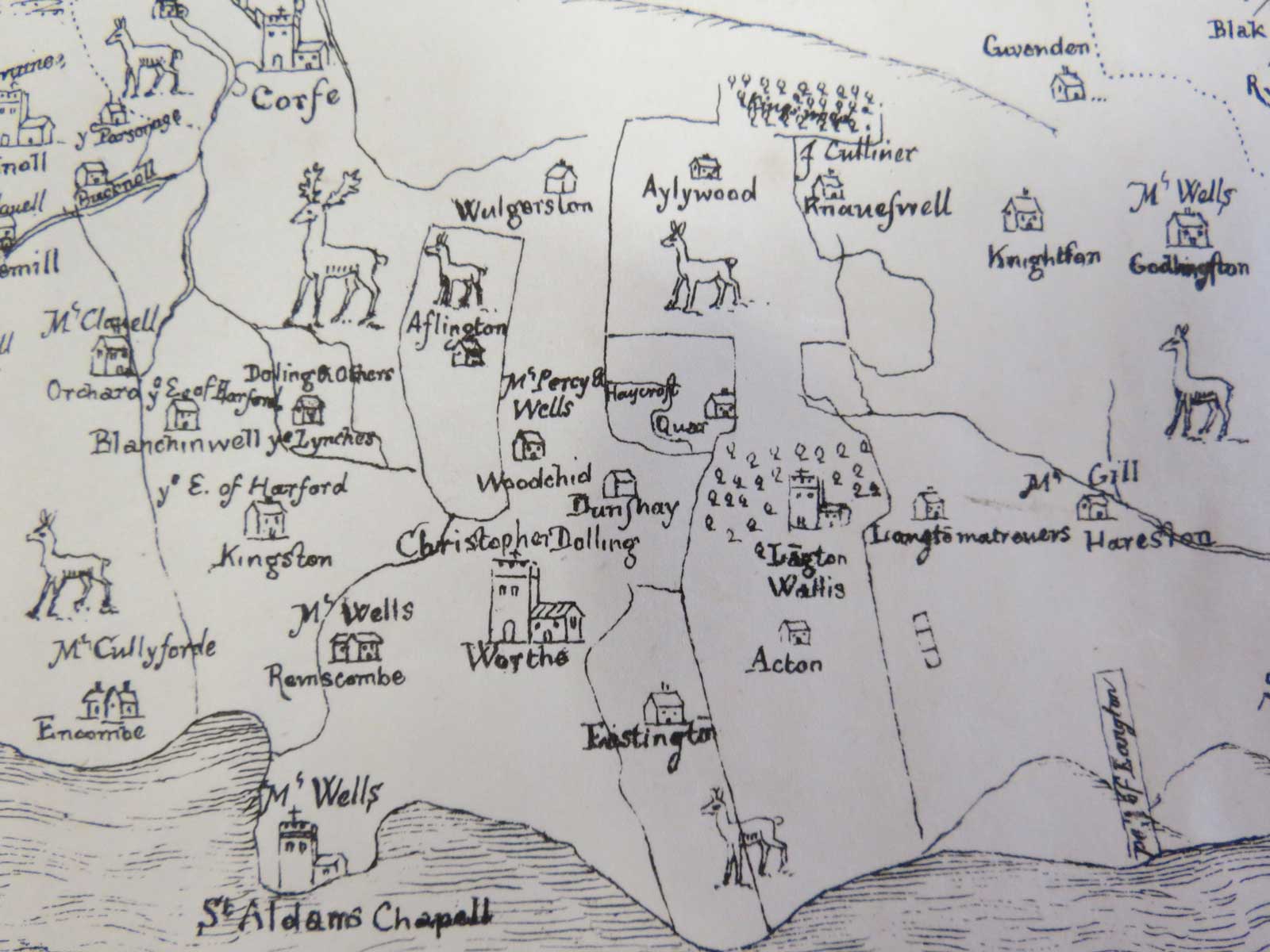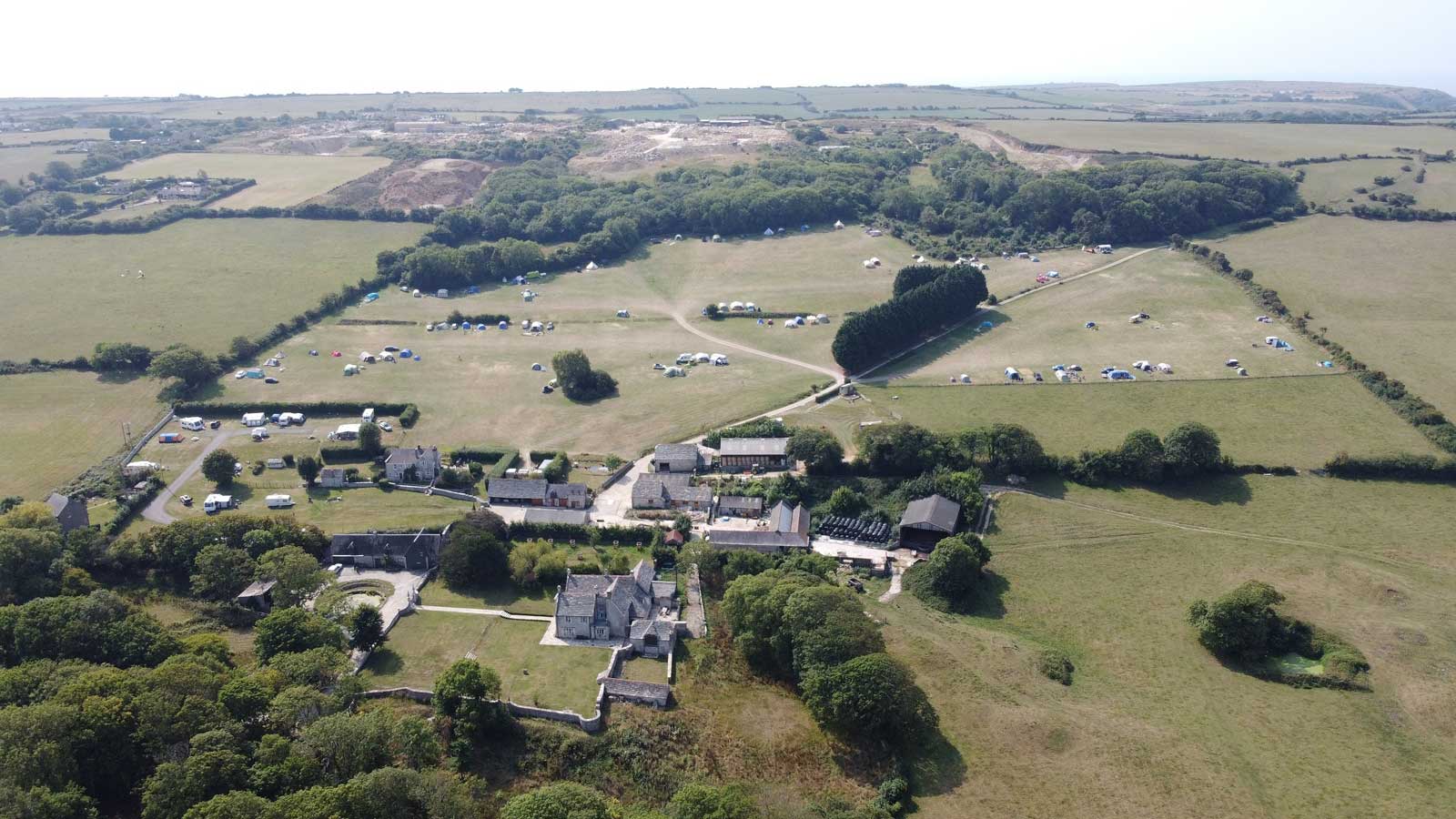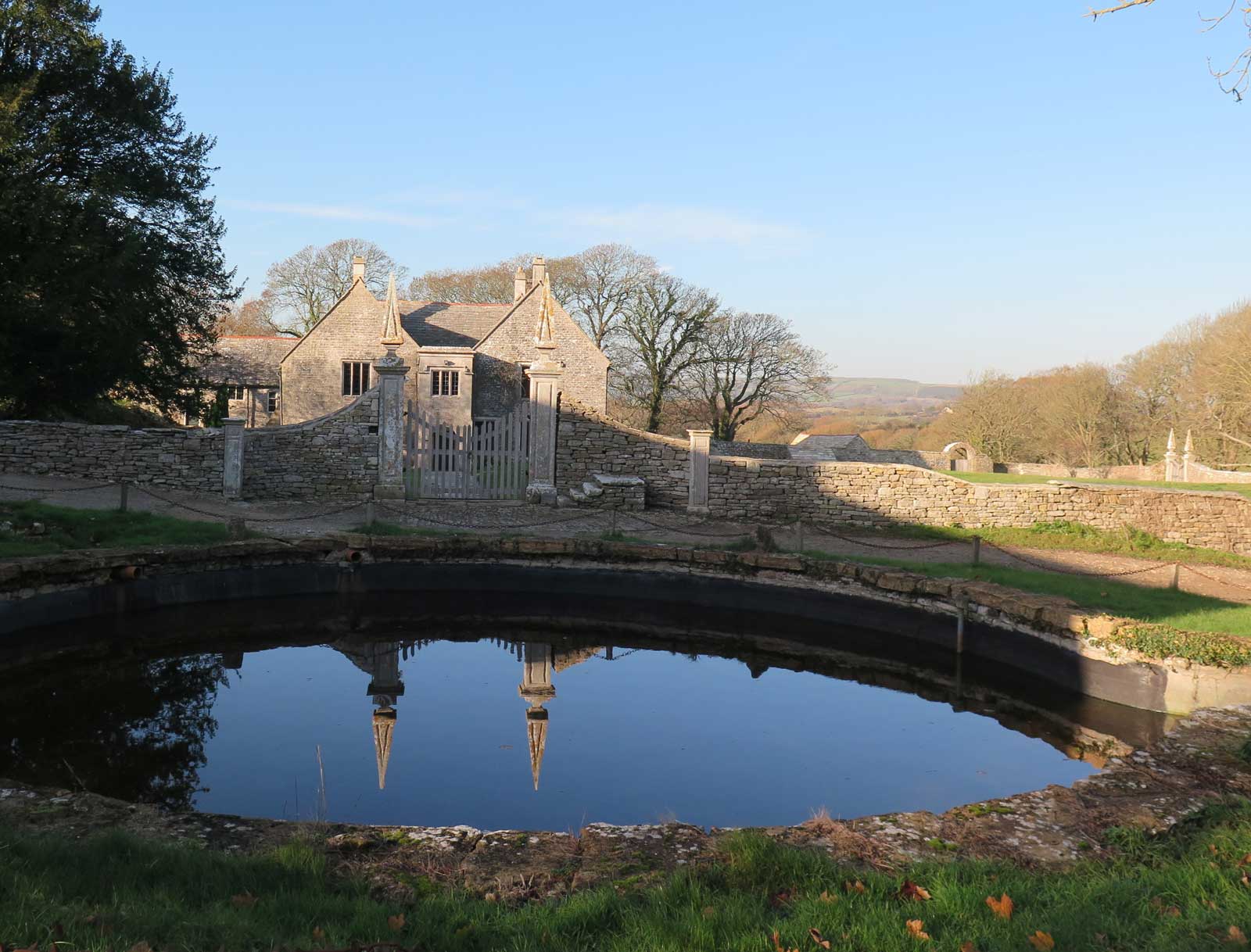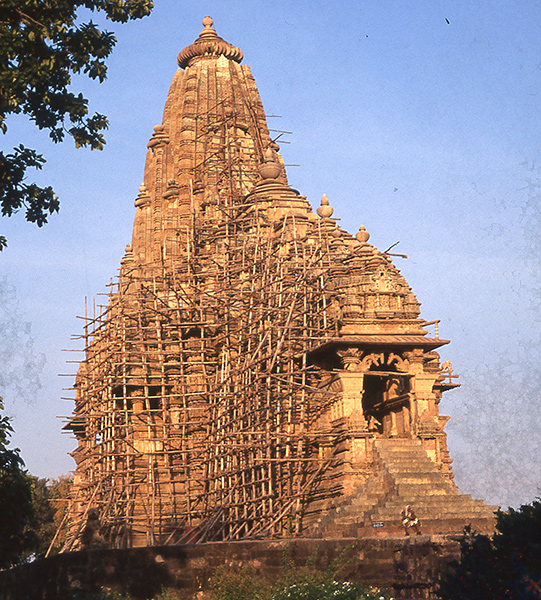19. Dunshay: The House
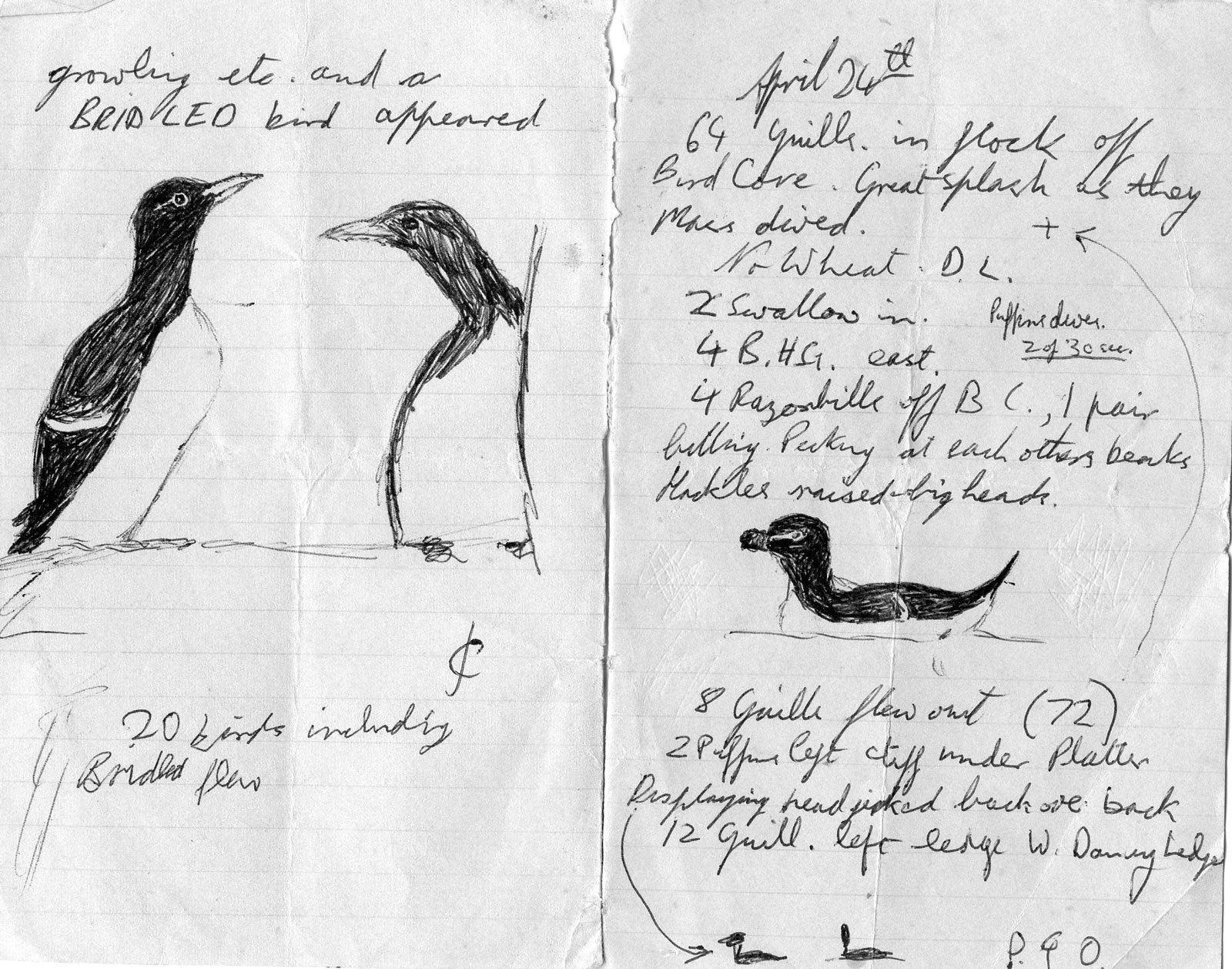
18. Puffins And Their Kin
August 27, 2020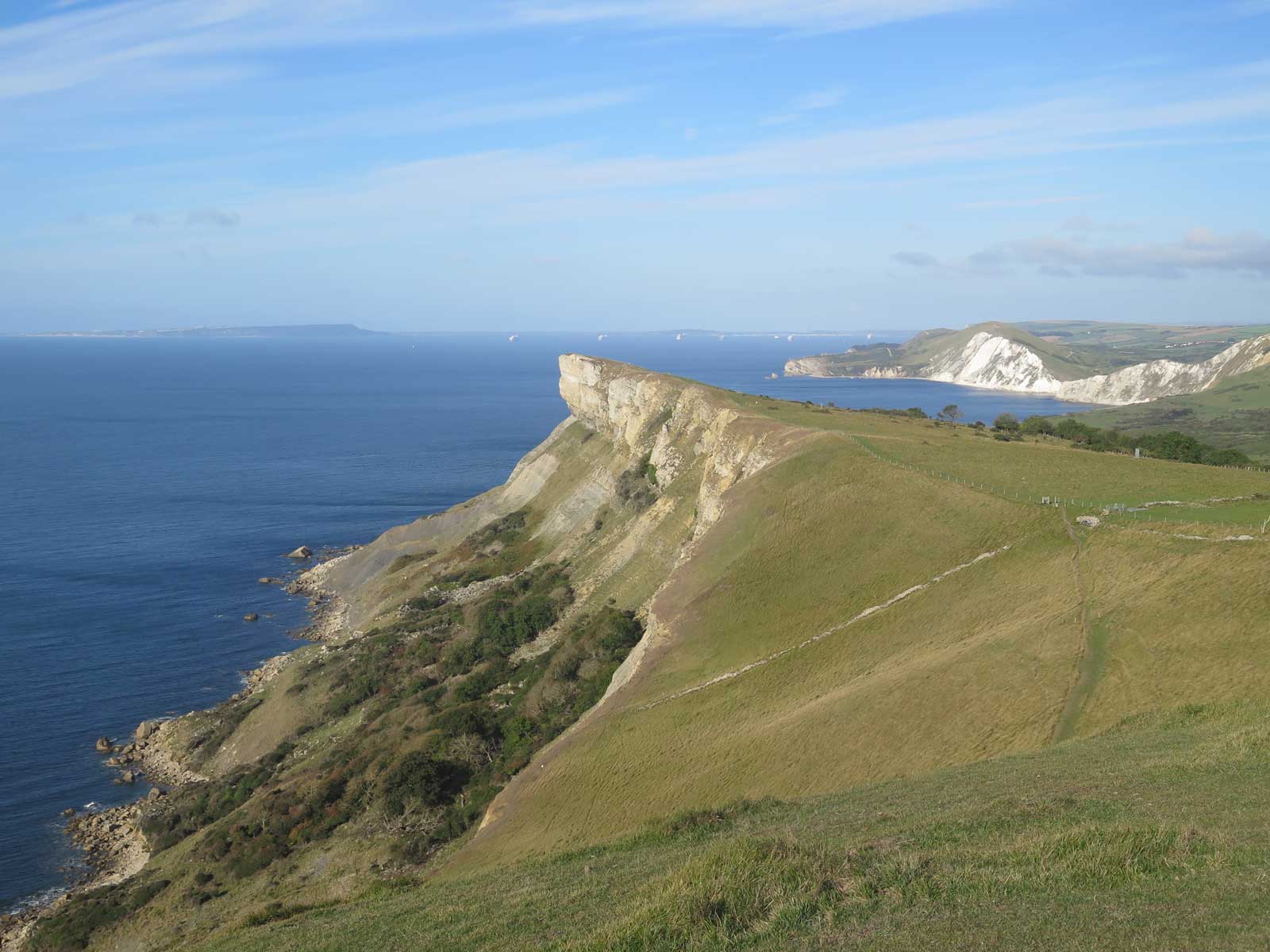
20. A Walk To Weymouth 1
September 10, 2020A fter 32 years, Dunshay has been my home for as long as Tanglin Cottage once was. The earliest part of the manor house's history is vague. The name doesn't feature in the Domesday Book of 1086, nor does Leland mention it in his 16th century Itinerary; however he quotes a now-vanished document stating that Alice de Briwere, who held Worth in the early 13th century, gifted Purbeck marble to the building of Salisbury Cathedral. The marble bed runs along the south edge of the Purbeck valley and its only sources in Worth parish are close to Dunshay and Quarr. I found no reference to Dunshay before the late 16th century, when the estate passed to Christopher Dolling. He probably moved into and extended the house which stood on the site around 1570. The labels of an upper window lintel on the south wall bear the initials C & D – Christopher Dolling; one of those above the lower window has been damaged – is it I or E? - the D is clear: this probably relates to his wife, Elizabeth. The origin of 'Dunshay' must derive from a Dunne or Donne who, Louise Hayward indicated, owned land in Worth parish in the early 14th century. This was Dunne's Hay – his holding.
The hopper of the gutter drainpipe on the side of the porch is clear: the three initials here are I A D – John (Christopher's grandson) and Ann Dolling. The date is 1642. They had expanded the house into a smart home, much as it stands now, with a two-gabled facade, a suitable manor house for Worth. 1642 saw the start of the Civil War and John, a royalist major, went away to fight for the king. Parliamentary troops held Corfe village, besieged the castle. The figure in the niche in the north wall of the house must represent John. It lacks head, hands and feet: he clearly had a Roundhead makeover.
The last Dolling heir was Margaret, who married John Pyke. They inherited the house in 1673 and passed it to their son, Robert. It was probably he who glorified the facade with its gateposts and tall, pointed finials. There are several cliffstone pillars like these in the area, including the gateposts of Durnford House in Langton Matravers, of Wareham Manor house in South Street and some renewed pillars in Charlton Marshall church. The last two are dated 1712 and 1713 respectively. The Dunshay gateway must be contemporary.
By 1776, with their fortunes waning, the Pykes decided to sell up. A new landowner was establishing himself in Purbeck. John Calcraft, a lawyer who made a fortune from dealing in supplies for the army, had bought much of Wareham and, at Rempstone, converted a farmhouse into a modest country seat. He was purchasing a strip of land from Poole Harbour to St Aldhelms Head (map Blog 15), had bought Worth village and was negotiating for Dunshay when he died in 1772, aged 46. That sale fell though.
At the nearby port of Poole merchants were flourishing on the Newfoundland cod fishing industry and on trade in local clay. One such merchant, Thomas Hyde, stepped in to buy Dunshay and held it for twenty years. During Hyde's tenure a familiar pub, 'The Sloop', now 'The Square and Compass', was opened in Worth on Dunshay land. Partly due to war with France and the break in trade with Europe, Hyde went bankrupt and the estate was auctioned in 1793. John Calcraft's son, John, bought it and the family held Dunshay until 1919, leasing it out to farmers.
The first tenant was Benjamin Jesty, from Yetminster, famous as the first vaccinator. He had noticed that milkmaids didn't catch smallpox and guessed that this was due to their frequent exposure to much milder cowpox. He inoculated his family with cowpox and discovered that those 'vaccinated' avoided smallpox. But he was a mere farmer and got no credit at the time. Twenty years later, a doctor, Edward Jenner cashed in on his discovery and is still often credited with it. Amongst graffiti on that drain hopper Benjamin's son, George, scratched his name 'G Jesty 1796'.
Dunshay, farmhouse for a large tract of surrounding land, was held by a series of Smiths, prosperous local tenant farmers. At some point the house's northern projecting wing collapsed; late 19th century drawings and photographs show that side in ruins. In 1901 the estate passed down the female line to a naval Captain, Guy Marston. He repaired the house and had the north wing rebuilt. He also built a separate farmhouse close to the southeast. But Marston didn't flourish. The First World War ended with him deeply in debt. Was it the war, gambling debts or blackmail which resulted in him selling the southern part of the Rempstone Estate? Most people prefer to think it was scandal, but then they would!
At the auction, in 1919, the Dunshay lot was bought by a farmer, E.J. Holland, who moved into the farmhouse and let out the manor house. Soon many of his cattle died from redwater fever. To make up the loss, in 1923, he put up the manor house for sale. His last tenant was Lucy Kemp-Welch, the famous equestrian painter.
George and Hilda Spencer Watson, both settled in London, had been renting Corner Cottage, in Studland, as a seaside holiday cottage since 1913, when their daughter Mary was born. At the turn of the century, Studland was briefly very fashionable with the Bloomsbury set. Amongst its visitors were Bertrand Russell, Vanessa and Virginia Stephen (later Bell and Woolf), Rupert Brook, Lytton Strachey, Maynard Keynes, Duncan Grant, Theodore Powys and the queen bee, Ottoline Morrell. Perhaps this played a part in attracting the Spencer Watsons. George was a fine portrait painter, Hilda a dancer and mime artist. The baby, Mary, had yet to decide her craft.
Hearing that Dunshay was for sale, they rode over to see the house and immediately put in an offer. In Septenber 1923, as soon as Lucy Kemp Welch moved out, they took over and were soon making improvements, building a stable block which would house Hilda's small theatre, converting a milking parlour into George's north-facing studio. He immediately started painting views of the place, its garden and the surroundings. Set in 50 acres (20 hectares) of farmland, it would be the family home until Mary died in 2006.
[For a fuller account: 'Purbeck Arcadia: Dunshay Manor & the Spencer Watsons' Ilay Cooper 2015 The Dovecote Press.]

